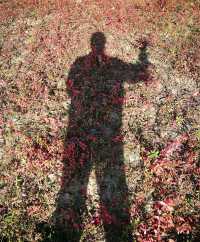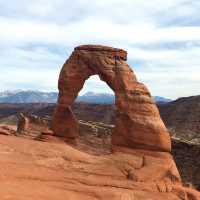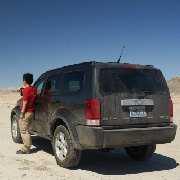This is one of the hot springs in Yellowstone Park. The spring water is very clear, and it is dark blue. It is very beautiful. There is also a small museum near the hot springs. It is an introduction to the hot springs in Yellowstone Park. It is worth visiting.
;
Norris Geyser Basin Review
4.5 /567 Reviews
Norris Geyser Basin Frequently Asked Questions
More Questions
Yellowstone Park, the lower left half of the upper circle
1 Answer
I recommended Norris Geyser Basin,Steamboat Geyser
1 Answer
Popular Destinations
Wuxi Travel | Cameron Highlands Travel | Frankfurt City Centre (Old Town) Travel | Gander Travel | Hangzhou Travel | Shantou Travel | Changchun Travel | Urumqi Travel | Shaoxing Travel | Thailand Travel | Port Klang Travel | Bukit Tinggi Travel | Mandrem Travel | Krabi Travel | Serpong Travel | Songjiang District Travel | Skirlaugh Travel | Tongxiang Travel | Chak Mahatab Travel | Saint-Eugene Travel | Alampur Ansu Travel | Volochaevskiy Travel | Kytsivka Travel | Odrintsi Travel | Reinoso Travel | Gemeinde Stinatz Travel | Kharapa Travel | Tabalbala Travel
Recommended Attractions at Popular Destinations
Bangkok attraction near me | Manila attraction near me | Tokyo attraction near me | Hong Kong attraction near me | Seoul attraction near me | Taipei attraction near me | Los Angeles attraction near me | Shanghai attraction near me | New York attraction near me | Kuala Lumpur attraction near me | Shenzhen attraction near me | Osaka attraction near me | Singapore attraction near me | London attraction near me | Guangzhou attraction near me | San Francisco attraction near me | Beijing attraction near me | Macau attraction near me | Bali attraction near me | Paris attraction near me | Ho Chi Minh City attraction near me | Jakarta attraction near me | Orlando attraction near me | Phuket attraction near me | Chicago attraction near me | Toronto attraction near me | Cebu attraction near me | Istanbul attraction near me | Seattle attraction near me | Dallas attraction near me
Popular Attractions
Dali Ancient City | Neuschwanstein Castle | Hongshan Forest Zoo | Universal Studios Singapore | The Sanctuary of Truth | Aquaria Phuket | Chimelong Paradise | Burj Khalifa | Fotang Ancient Town | Beijing World Park | Chengdu Research Base of Giant Panda Breeding | Sunway Lagoon Theme Park | Lian Island | Petrosains, The Discovery Centre | Tang Paradise | Jazaer Beach | Jinli Street Ancient Street | Chateau Thenac | Lutai Convention & Exhibition Center | Iglesia de la Magdalena | Tower of the Abbey of Watten | Airmax Parapente | Palazzo Henrici | Guardamar Moncayo Beach | Ribersborgs Kallbadhus | Safa to Marwa | Fornace Bianchi | Baoquan Tourist Resort Area | Grandview Aquarium | Xingping Ancient Town
Popular Travelogues
Bangkok Travelogue | Manila Travelogue | Tokyo Travelogue | Hong Kong Travelogue | Seoul Travelogue | Taipei Travelogue | Los Angeles Travelogue | New York Travelogue | Shanghai Travelogue | Kuala Lumpur Travelogue | Shenzhen Travelogue | Osaka Travelogue | London Travelogue | Singapore Travelogue | Guangzhou Travelogue | San Francisco Travelogue | Beijing Travelogue | Macau Travelogue | Bali Travelogue | Paris Travelogue | Orlando Travelogue | Jakarta Travelogue | Ho Chi Minh City Travelogue | Chicago Travelogue | Phuket Travelogue | Toronto Travelogue | Istanbul Travelogue | Cebu Travelogue | Seattle Travelogue | Dallas Travelogue
Popular Ranked Lists
Popular Family-friendly Attractions Near Otog Banner | Popular Family-friendly Attractions Near Xinye | Popular Family-friendly Attractions Near De'an | Popular Family-friendly Attractions Near Hanggin Rear Banner | Popular Premium Hotels Near Kuto | Top 15 Fine Dining in Sapporo | Top 14 Fine Dining in Nagoya | Popular Luxury Hotels Near Addo | Popular Luxury Hotels Near Ankara | Top 4 Fine Dining in Nanning | Popular Luxury Hotels Near Pipa | Top 6 Fine Dining in Shantou | Top 20 Local Restaurants in Berlin | Popular Premium Hotels Near Bethlehem | Popular Premium Hotels Near Durants | Popular Family-friendly Attractions Near Xuchang | Popular Family-friendly Attractions Near Tumed Left Banner | Popular Premium Hotels Near Ortahisar | Popular Premium Hotels Near York County | Popular Luxury Hotels Near Lecce | Top 11 Fine Dining in Istanbul | Popular Luxury Hotels Near Batam Center | Popular Family-friendly Attractions Near Chengjiang | Top 7 Fine Dining in Dalian | Top 4 Bars in Liuzhou | Popular Family-friendly Attractions Near Wuyang | Top 5 Fine Dining in Phu Quoc Island | Popular Family-friendly Attractions Near Hainan Tibetan Autonomous Prefecture | Popular Family-friendly Attractions Near Weifang
Payment Methods
Our Partners
Copyright © 2024 Trip.com Travel Singapore Pte. Ltd. All rights reserved
Site Operator: Trip.com Travel Singapore Pte. Ltd.
Site Operator: Trip.com Travel Singapore Pte. Ltd.













